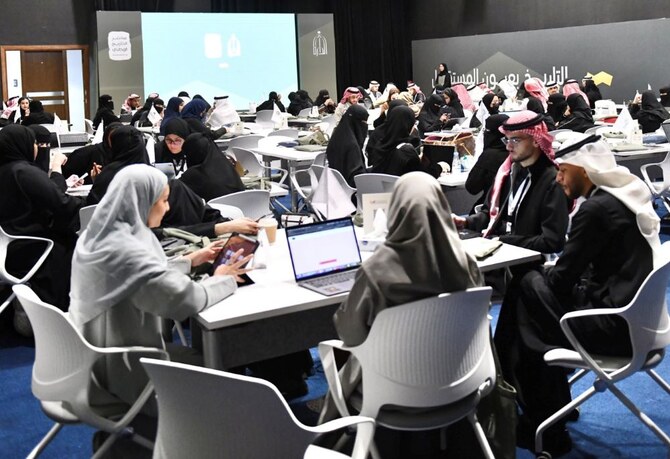RIYADH: Najran’s rich architectural heritage, crafted with local materials and traditional techniques, blends past and present in a way that aligns with Vision 2030’s focus on preserving the nation’s culture.
It serves as a valuable inspiration for sustainable, technologically advanced projects such as NEOM and Qiddiya, the Saudi Press Agency reported recently.
Najran maintains its distinct character through its architecture. The mud houses showcase architectural solutions tailored to local environmental conditions and are deeply rooted in customs and traditions.

The old city of Najran stands as a vital part of the Arabian Peninsula’s cultural heritage, featuring archaeological sites including castles, palaces, and traditional homes that date back over three centuries.
Abdulrahman Al-Majadah, assistant professor of urban design at Najran University, told the SPA that traditional houses in Najran typically do not exceed 100 sq. meters.
The remaining land is reserved for livestock, grain storage, and summer living areas. These old mud houses are noted for their simplicity, beauty, and harmonious design, standing apart from the interconnected urban layout of traditional Islamic cities.

Rather than being enclosed by protective walls, the old city consists of several residential complexes shaped by social customs, nestled among farms, and reflecting a strong sense of security and cohesion.
Al-Majadah noted five traditional styles of Najrani houses: Al-Qasbah, Al-Darb, Al-Mushulaq, Al-Murabba, and Al-Muqaddam.
The Al-Qasbah style, typically found in village centers, features a circular design with a broad base that narrows upward, resembling guard towers and earning it the name Al-Abraj, he explained.

Al-Mushulaq is characterized by rooms facing the main entrance, taking a U or L shape, with two to three floors. The most common is Al-Darb, which has seven floors, while Al-Muqaddam is simpler, consisting of a single floor with a roof.
Decorative elements play a vital role in enhancing the beauty of these traditional homes. Horizontal bands adorn the upper edges of buildings, some featuring hollow arches, with doors and windows framed in white gypsum.
The arrangement of windows creates a rhythmic exterior, and the buildings often reflect the natural colors of materials including wood, gypsum and clay.
Nasser Ayran, a restoration expert for mud houses in Najran, highlighted the increasing demand for the rehabilitation of these traditional homes, driven by a desire to preserve cultural heritage and enhance the visual appeal of local villages.
Given the limited land, dividing properties among heirs is impractical, making preservation the better option.
The Heritage Commission is playing a key role in documenting urban heritage and creating a national registry of sites throughout the Kingdom for researchers.
The construction of these houses involves using mud and stones. The initial stage, known as Al-Wathar, includes laying a horizontal row of stones called Al-Madmak. Drying times vary from two to three days in winter to one day in summer before the second layer is added.
Roof construction uses palm trunks, tamarisk, or sidr, coated with mud plaster, and treated with lime in a process known as Al-Qadad. This meticulous craftsmanship emphasizes the deep connection between Najran’s architectural heritage and its cultural identity.





























